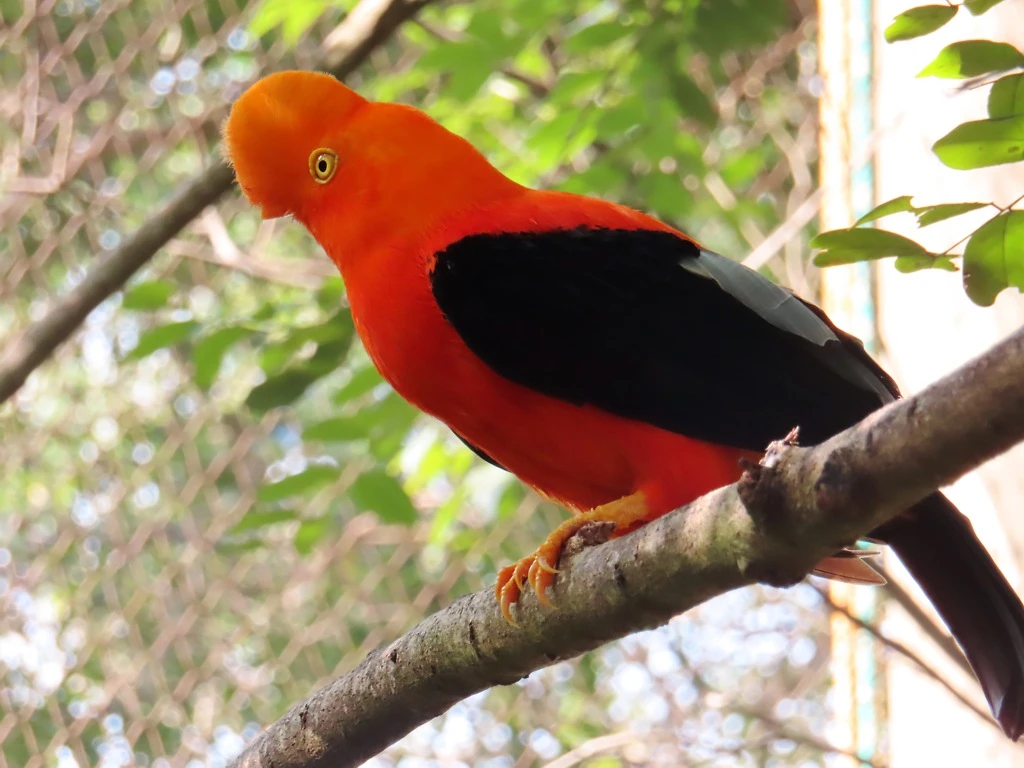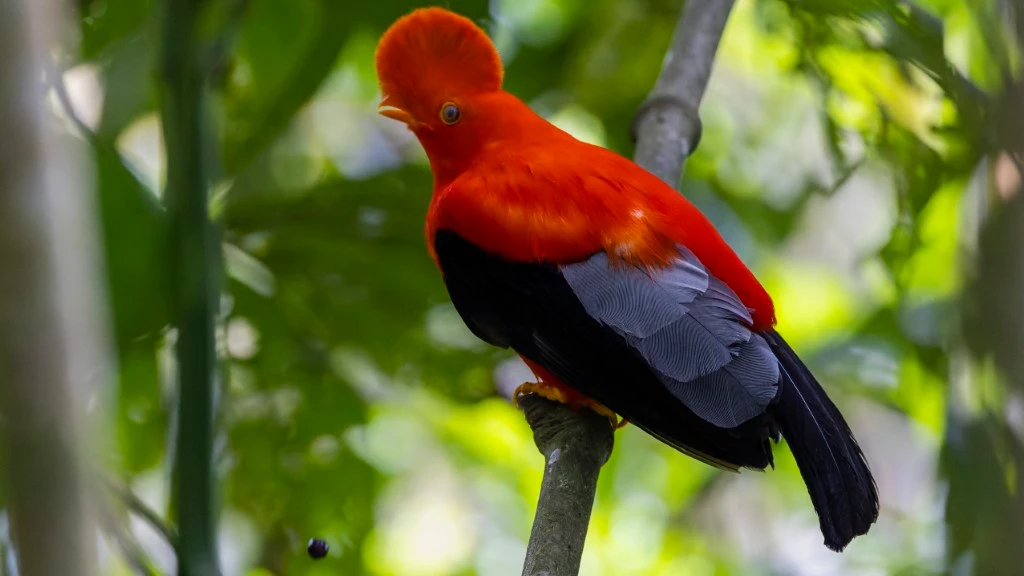The Cock-of-the-Rock, scientifically known as Rupicola peruvianus, is one of the most impressive and colorful birds in South America. Declared the national bird of Peru, its vibrant plumage and unique behavior have captivated scientists and tourists from all over the world. This beautiful bird is not only an emblem of the country, but also a constant reminder of the rich biodiversity that Peruvian forests harbor and the importance of conservation.
Cock of the Rock habitat
The Cock-of-the-Rock lives in the Andean cloud forests, a highly biodiverse ecosystem that extends from the eastern slopes of the Andes to the Amazon basin. In Peru, important populations are found in protected areas such as Manu National Park and Megantoni National Sanctuary. These forests, characterized by their humidity and constant fog, are the ideal home for this bird.
The wooded areas inhabited by the Cock-of-the-Rock are full of tall trees, covered in moss and epiphytes, which offer shelter and food for both the bird and other species of fauna. The undergrowth, in particular, is where this bird moves most frequently, as it finds fruits and small insects there to eat.
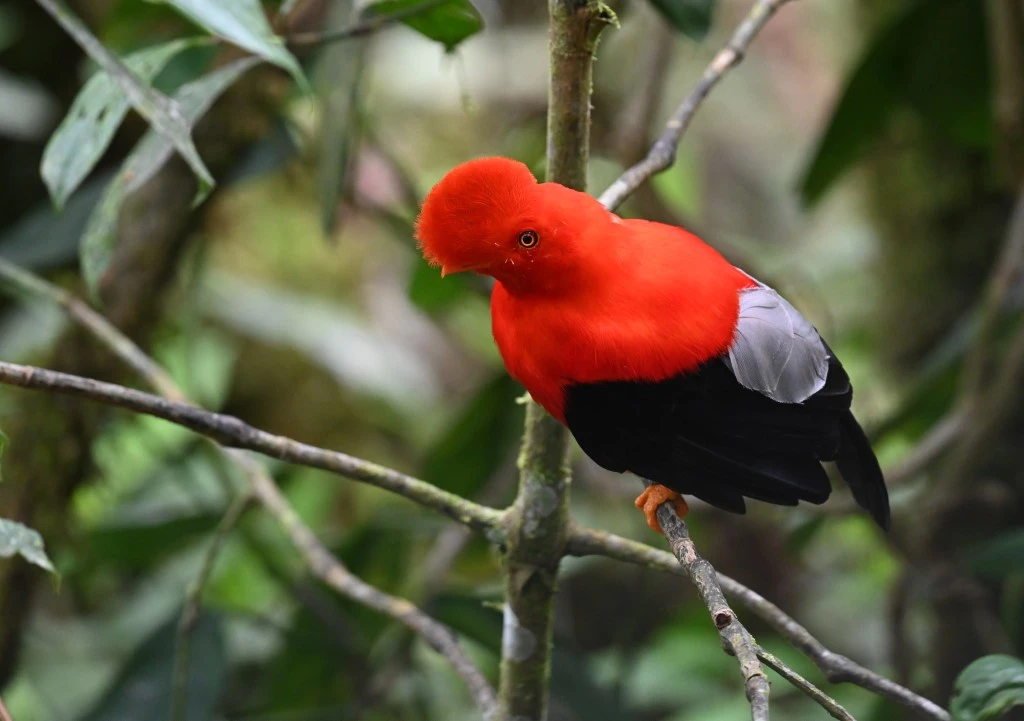
Physical characteristics and behavior of the Cock-of-the-Rock
The male Cock-of-the-Rock is known for its bright red or orange plumage and fan-shaped crest. This distinctive ornament on his head plays a key role during the breeding season, as he uses it to attract females. In contrast, females are a duller brown color, which allows them to camouflage themselves in the environment and protect themselves from predators.
In addition to its striking plumage, the Cock-of-the-Rock is famous for its courtship behavior. During mating season, males gather in areas called leks, where they perform displays to attract females. These displays include a series of leaps, short flights and flaps, accompanied by rhythmic sounds such as squawks and clicks. This ritual not only demonstrates the physical prowess of the male, but also the quality of his genes, factors that females consider when selecting a mate.
The behavior of the Cock of the Rock is full of energy and excitement. Males compete intensely for the attention of females, and only the strongest and most conspicuous males are able to reproduce. This ensures that the offspring are strong and more likely to survive in the wild.
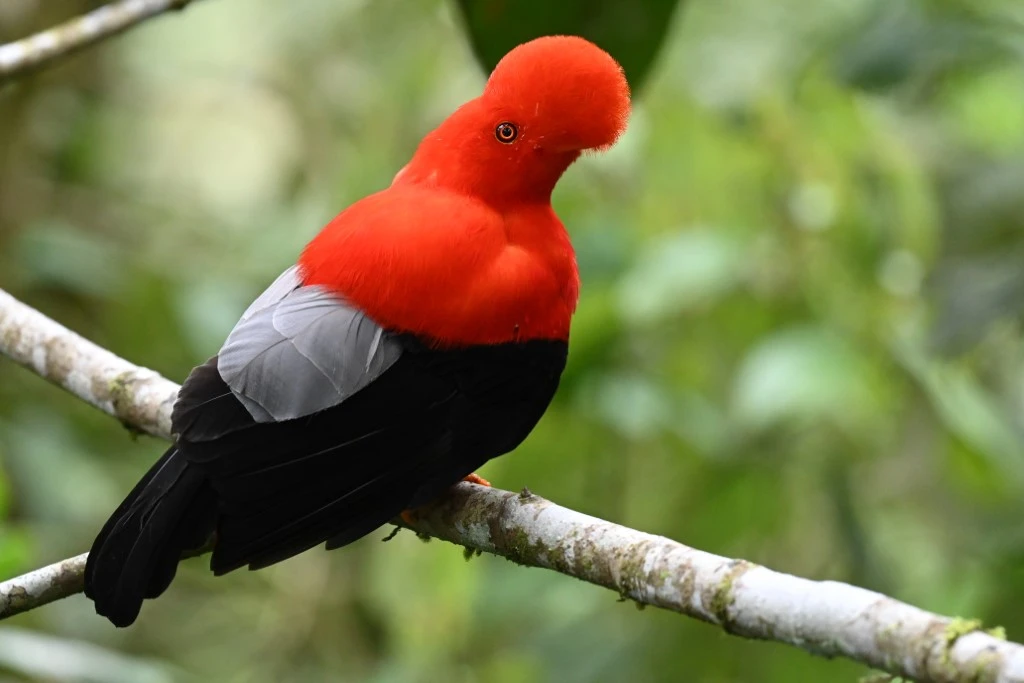
Diet and ecology of the Cock-of-the-Rock
The diet of the Cock of the Rock is based mainly on fruits, although it can also include insects and small invertebrates. Its ecological role is key, as it acts as a seed disperser. By consuming fruits, seeds are transported to different areas of the forest, promoting regeneration and plant diversity in cloud forests.
This seed dispersal behavior is fundamental to the health of the ecosystem, as many of the plants it consumes depend on the Cock-of-the-Rock for their propagation. The close relationship between the bird and its environment underscores the need to protect both the species and its natural habitat.
Conservation efforts to protect this unique bird
Despite its status as a national bird, the Cock-of-the-Rock faces threats such as habitat loss and fragmentation due to logging of cloud forests for agriculture. It is also threatened by hunting and capture for the pet trade. Protected areas have been established and conservation efforts are underway to preserve its natural habitat and raise awareness of its importance in Peruvian biodiversity.
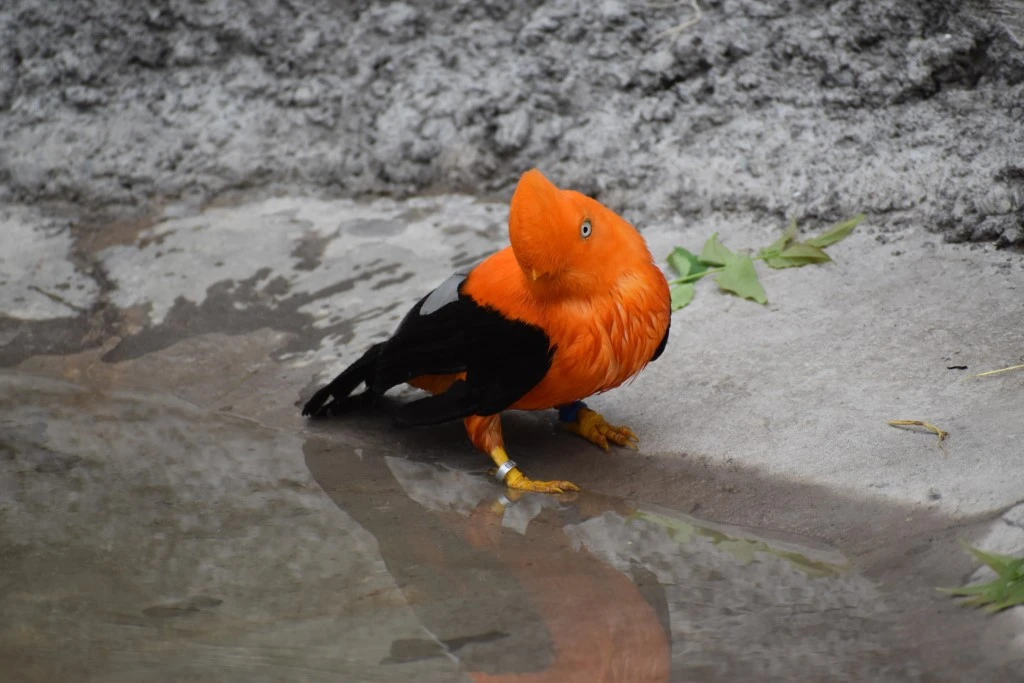
Ecotourism and conservation
Ecotourism has been key to the conservation of the Cock of the Rock. Many tourists come to Peru to observe this species in its natural habitat, which has promoted the creation of sustainable tours and routes that contribute to the preservation of its environment and benefit local communities.
Cock-of-the-Rock Sighting Tours
There are several popular tours that allow you to observe the Cock of the Rock in its natural habitat in the Andean forests. Among the most outstanding are:
- Manu Amazon Rainforest Tour (3 days)
- Manu Rainforest Tour (4 days)
- Manu National Park (5 days)
- Manu Reserved Zone Tour (6 days)
- Manu Wildlife Tour, Peru (7 days)
These tours offer visitors the opportunity to explore Peru’s biodiversity and have a close encounter with the Cock of the Rock, in addition to contributing to sustainable ecotourism and the conservation of its habitat.
